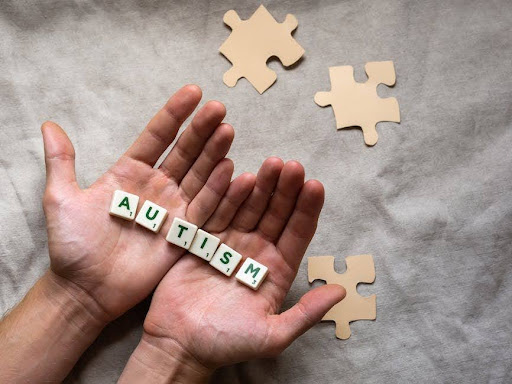Every parent hopes to see their child thrive, but the journey can be uniquely challenging when raising a child on the autism spectrum. Balancing the nuanced needs of a child with autism requires patience, understanding, and strategic approaches.
The following guide aims to provide actionable strategies to facilitate development, enhance learning, and foster social skills that bolster confidence and independence. Through a focus on personalization, support, and resources, caregivers can better equip themselves to help their child reach their full potential.
Understanding Autism Spectrum Disorder
To effectively support a child with autism, understand the condition itself. Autism Spectrum Disorder, ASD for short, is a developmental disorder that affects communication, social interaction, and behavior. Each child’s experience with autism is unique, often referred to as a “spectrum” due to the varying degrees of symptoms and capabilities. Many children with ASD may have exceptional abilities in specific areas while facing challenges in others.
By recognizing individual strengths and weaknesses, caregivers can tailor strategies for development and education. This understanding shapes how parents interact and engage with their children. Online resources such as the Autism Parenting Magazine offer insightful articles that can deepen your understanding and equip you with practical tips tailored to your child’s needs. Engaging with literature and community support can be significant in building effective approaches to parenting.
Creating a Supportive Environment
A conducive environment is a necessity for any child, particularly those with autism. Setting up a home that reduces distractions and promotes focus can significantly aid learning and emotional regulation. Designate specific areas for play, learning, and relaxation, allowing the child to have structured spaces that cater to different activities.
Predictable routines further enhance this environment — they provide security and clarity to children who may thrive with structure. Visual schedules can help children anticipate daily events and transitions. A quiet zone enables children to retreat when feeling overwhelmed, promoting self-regulation and independence. Parents should also consider sensory experiences: some children may respond positively to activities such as deep-pressure scenarios or engaging tactile materials. The goal is to create a nurturing space that adapts to the child’s sensory needs and learning styles.
Effective Communication Strategies
Communication may be a hurdle for many children on the autism spectrum. Tailored strategies that resonate with their preferred modes of communication can herald remarkable progress. Use visual aids or communication boards alongside spoken language that aligns with their understanding and expression skills. It’s also beneficial to practice clear and straightforward language, avoiding idioms or metaphors that may confuse them.
Allow processing time following questions or instructions to foster an opportunity for the child to respond. Incorporate technology, like speech-generating devices, for nonverbal children, expanding their ability to communicate thoughts and needs. Engaging in regular conversations about their interests will show them you care about their perspective and reinforce connection and trust. Over time, these techniques can help unlock pathways for communication that boost social interaction.
Incorporating Therapy and Educational Resources
Several therapeutic methods may be the solution to contributing to the development of children with autism. Behavioral Analysis (ABA), Occupational Therapy (OT), and Speech Therapy are among the most prominently recommended. ABA focuses on improving specific behaviors while increasing communication and social skills through structured interventions. Conversely, OT emphasizes daily living skills and sensory processing, helping children learn to navigate their environments more effectively. Speech Therapy can assist in developing verbal skills and enhancing both receptive and expressive communication.
Pairing these therapeutic approaches with educational resources tailored to autism can harness their unique learning styles. Special education programs typically offer tailored curriculums that cater directly to children with ASD so they receive the appropriate support. Proactively seek out and integrate these resources to aid parents and caregivers in crafting a systematic approach toward their child’s development.
Fostering Social Skills Through Interaction
Social engagement and friendships can be particularly beneficial for children with autism. Structured playdates with peers who have an understanding of autism can foster simpler interactions in a controlled way. Group activities such as sports, art classes, or after-school programs provide natural opportunities for children to refine their social skills. These interactions should be supervised initially and can be guided by caregivers to facilitate healthy communication and cooperation.
Teaching children about nonverbal cues can also enhance their ability to engage in social settings and help them understand the nuances of conversation beyond spoken words. Social stories and role-playing are effective strategies to prepare children for specific social scenarios, providing them with a framework to build confidence. Always encourage positive peer relationships through shared activities to enrich their interactions and impact their social development.
Encouraging Independence and Life Skills
One of the most rewarding aspects of raising a child with autism lies in guiding them towards independence. Fostering life skills is critical in equipping children with the necessary tools to navigate the world confidently.
Start with small tasks, like dressing themselves and managing personal hygiene routines, to build a strong foundation for autonomy. Gradually introduce responsibilities (packing their school bags or preparing simple meals) to reinforce self-sufficiency. Visual step-by-step guides can simplify complex tasks and make them more approachable. Encouraging problem-solving opportunities helps children learn to manage challenges independently. Eventually, engaging them in community activities through volunteering can provide valuable real-world experiences. Each successful step bolsters their self-esteem and nurtures a sense of independence as they grow.
Building a Support Network
Connecting with others who understand the unique challenges of raising a child with autism opens doors to emotional support and wisdom. Whether through local support groups, online forums, or community programs, engaging with trusted networks can reduce feelings of isolation. Sharing experiences, acquiring new strategies, and exploring varied perspectives can be immensely comforting for caregivers.
Relationships with professionals, teachers, and therapists ensure an expansive support system that encompasses various aspects of life. Staying informed about autism advocacy groups and local resources enhances this network further, enabling parents to access the help and information they may need. Through collaboration with like-minded individuals, parents can feel more empowered and equipped to tackle the journey of raising their children effectively.
 Creating a fulfilling life for a child with autism requires understanding, patience, and resourcefulness. Parents can establish a strong foundation by focusing on their child’s unique strengths, fostering effective communication, and building a supportive environment. Just as a child grows and learns at their own pace, caregivers too must adapt strategies to meet their evolving needs. While challenges exist, the journey also presents infinite opportunities for connection and accomplishment.
Creating a fulfilling life for a child with autism requires understanding, patience, and resourcefulness. Parents can establish a strong foundation by focusing on their child’s unique strengths, fostering effective communication, and building a supportive environment. Just as a child grows and learns at their own pace, caregivers too must adapt strategies to meet their evolving needs. While challenges exist, the journey also presents infinite opportunities for connection and accomplishment.

